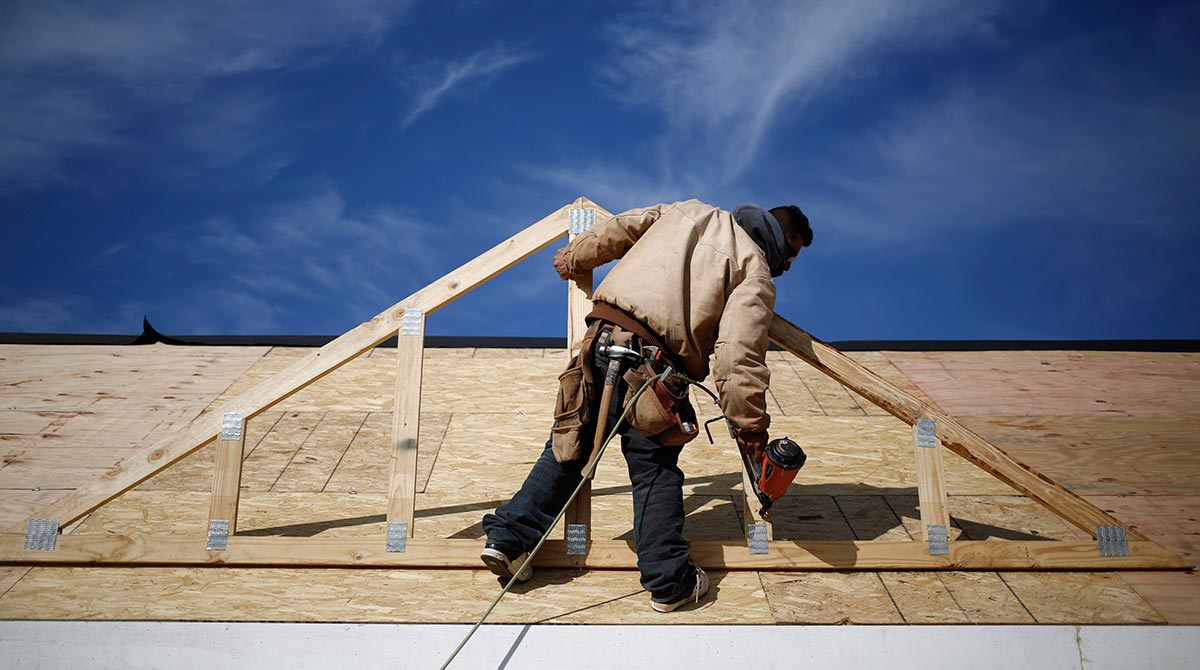Housing Starts Jump to Seven-Year High, Permits Rise

New residential construction in the United States surged in April to the highest level in more than seven years, indicating the industry regained its footing after the soft patch at the beginning of the year.
Housing starts jumped 20.2% to a 1.14 million annualized rate, the most since November 2007, from a 944,000 pace in March, a Commerce Department report showed May 19.
The median forecast of 83 economists surveyed by Bloomberg News was 1.02 million. More permits, a proxy for future construction, were issued than at any time since June 2008.
An improving labor market and mortgage costs close to multiyear lows are reviving residential construction, a sign that the weakness in early 2015 probably was due to harsh winter weather.
Builders including PulteGroup Inc. have said the spring selling season is off to a good start, and sentiment data for May showed developers are optimistic about the next six months.
“Housing demand is clearly picking up,” said David Sloan, a senior economist at 4Cast Inc. in New York, whose estimate for the level of starts was the closest in the Bloomberg survey. “Housing should show quite strong momentum over the next few quarters. Permits also suggest solid underlying demand.”
Estimates in the Bloomberg survey of economists ranged from 955,000 to 1.2 million. The prior month’s pace previously was reported as 926,000.
Last month’s 20.2% jump in starts was the biggest since February 1991. Construction slumped 16.7% in February as harsh weather prevented developers from starting new projects.
The Commerce Department also issued its annual revision to the construction data, which affected the numbers back to January 2013.
Permits increased to a 1.14 million annualized rate, a sign construction will remain strong this month. They were projected to climb to a 1.06 million pace after 1.04 million the prior month, according to the survey median.
The surge in housing starts last month was paced by single-family projects in the West and multifamily in the Northeast, pointing to broad-based gains in the industry.
Construction of single-family houses in all the United States jumped 16.7% to a 733,000 rate, the most since January 2008.
Work on multifamily homes, such as townhouses and apartment buildings, climbed 27.2% to an annual rate of 402,000.
Three of four regions showed gains, led by the Northeast and West. The South was the only area with a decline.
Homebuilder confidence dipped in May, a report from the National Association of Home Builders/Wells Fargo showed May 18. The figures showed measures of sales and buyer traffic dropped, while a gauge of the six-month outlook for purchases advanced.
PulteGroup, the third-largest U.S. homebuilder, is among companies that are optimistic this year, citing the improving outlook for employment and low borrowing costs.
“Given the acceleration in U.S. housing demand in the early stage of the spring selling season, our expectations are that the strengthening of demand is sustainable and should drive better new home sales for all of 2015,” CEO Richard Dugas said on an earnings conference call April 23.
PulteGroup reported on the same day that while first-quarter orders rose from a year earlier, its profit fell on higher income tax expenses, acquisition costs and construction delays that slowed home closings.
The latest data available on house sales show a mixed picture. Purchases of previously owned homes jumped in March by the most in four years, while those of new dwellings, a smaller part of the market, fell to a four-month low.
Some companies are stepping up efforts to draw in more first-time buyers. D.R. Horton Inc., the largest U.S. homebuilder by revenue, in April said its entry-level Express Homes division may make up a greater share of sales, putting pressure on profit margins. The company also said earnings in the second quarter ended March 31 rose as sales increased.
An improving labor market will help sustain demand. Payrolls climbed by 223,000 in April after an 85,000 gain the prior month, according to Labor Department data. The jobless rate fell to 5.4%, the lowest since May 2008.
Borrowing costs have stayed low. The average 30-year, fixed-rate mortgage was 3.85% in the week ended May 14, close to the level at the start of 2015 and below last year’s high of 4.53% reached in early January 2014, according to data from Freddie Mac in McLean, Virginia.
Recent economic data, including retail sales that were little changed in April and a plunge in the University of Michigan preliminary consumer sentiment index in May, have raised concern that second-quarter growth may not pick up after the economy almost stalled in the first three months of 2015.
Gross domestic product may grow at a 2.7% annualized rate this quarter, down from the 3.1% forecast in April, according to the median estimate in a survey conducted by Bloomberg from May 8 to May 13.
Residential investment has contributed 0.1 percentage point to economic growth on average over the past four quarters.

